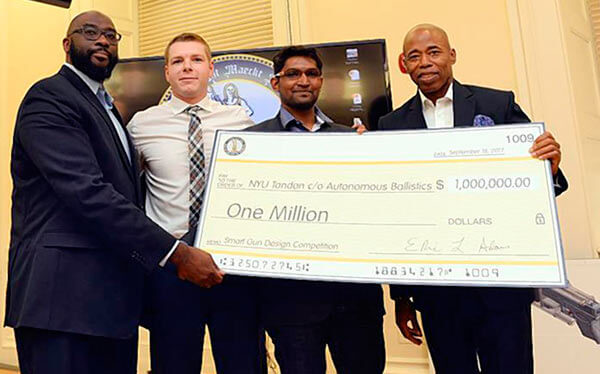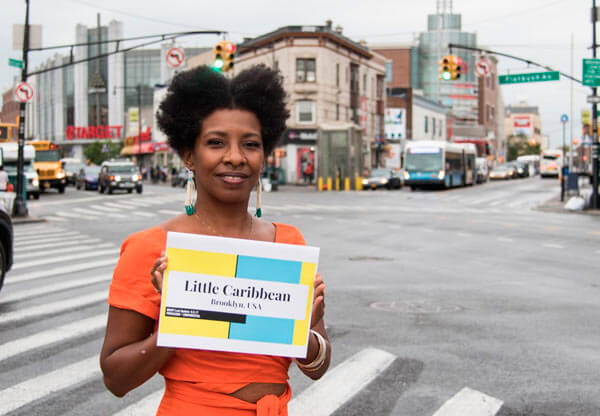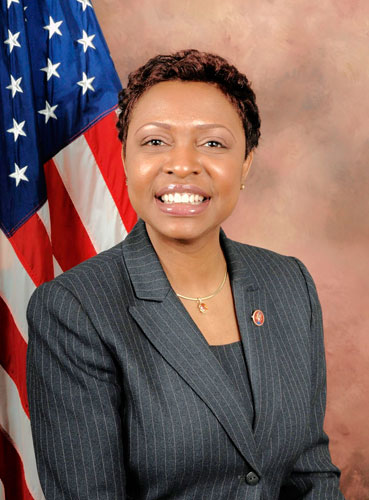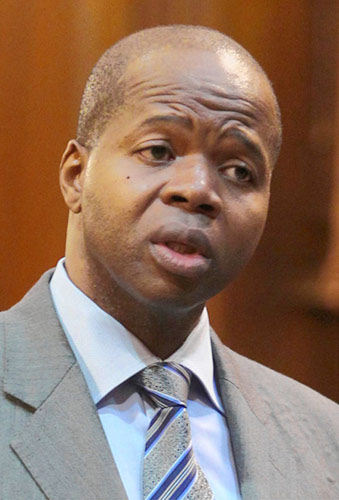Brooklyn Borough President Eric L. Adams on Monday announced the winner of his $1 million Smart Gun Design Competition, awarding the capital grant prize to New York University Tandon School of Engineering (NYU Tandon) on behalf of its student team Autonomous Ballistics.
The team, which was selected by a judging panel, is said to have created the most promising proposal that will prevent unauthorized users from firing a gun.
Autonomous Ballistics, which is mentored by Adjunct Professor Anthony Clarke, is made up of team leader Sy Cohen, Class of 2017, with a degree in mechanical engineering; Ashwin Raj Kumar, a Ph. D candidate in the Department of Mechanical and Aerospace Engineering; Jonathan Ng, Class of 2016, with a degree in mechanical engineering; and Eddilene Paola Cordero Pardo, an officer in the Colombian Navy and a Master’s degree student majoring in technology management.
The conclusion of this competition — held in collaboration with the Mayor’s Office of Criminal Justice (MOCJ), New Yorkers Against Gun Violence (NYAGV), the New York City Police Department (NYPD), and the Smart Tech Challenge Foundation — featured a design expo in the Community Room of Brooklyn Borough Hall that included presentations from the five student teams that were named finalists last month.
Adams, himself a former police officer, as well as a gun owner, praised all of the competition’s teams for contributing positively to the ongoing effort to end gun violence in Brooklyn.
“I am so proud of these incredibly innovative young people, who have channeled our collective pain from senseless gun violence into a purposeful mission of designing technology that can save lives,” he said. “I look forward to working with NYU Tandon and their students on this proposal in the months ahead.
“Today, Brooklyn is taking a meaningful step forward for our nation and our world in advancing a future where smarter guns and safer streets are a reality,” he added.
The finalists also included Energy Environmental Simulation (EES) Lab from New York City College of Technology, Intelligent Defense Systems (IDS) from Pratt Institute, Pew Pew from New York City College of Technology, and Smartfire Technology from NYU Tandon.
Teams were invited to enter the Smart Gun Design Competition between Sept. 1, 2016 and Jan. 1, 2017, and submitted their design by the deadline of Jun. 1, 2017, Adams said.
He said one entry was accepted per team, with school entering as many teams as they wished.
One graduate student or professor was required to be on each team with undergraduate students.
The team leader had to be affiliated with the school, but team membership was open to the public.
A committee of jurists selected the five best ideas submitted to the Smart Gun Design Competition and allocated $10,000 grants from Adams’ discretionary budget to the finalists’ institutions in order to further their work.
Additionally, these entries will be evaluated for their viability to be assessed further through testing in collaboration with the NYPD.
Jurists included Adams, MOCJ’s Office to Prevent Gun Violence Executive Director Eric Cumberbatch, NYAGV Executive Director Rebecca Fischer, Strategic Operational Solutions, Inc. test engineer Jonathan Hayes, and Smart Tech Challenge Foundation President Margot Hirsch.
The concepts were assessed based on their adaptability into the market, feasibility, flexibility in application, potential impact on public safety, as well as potential for other uses, Adams said.

























